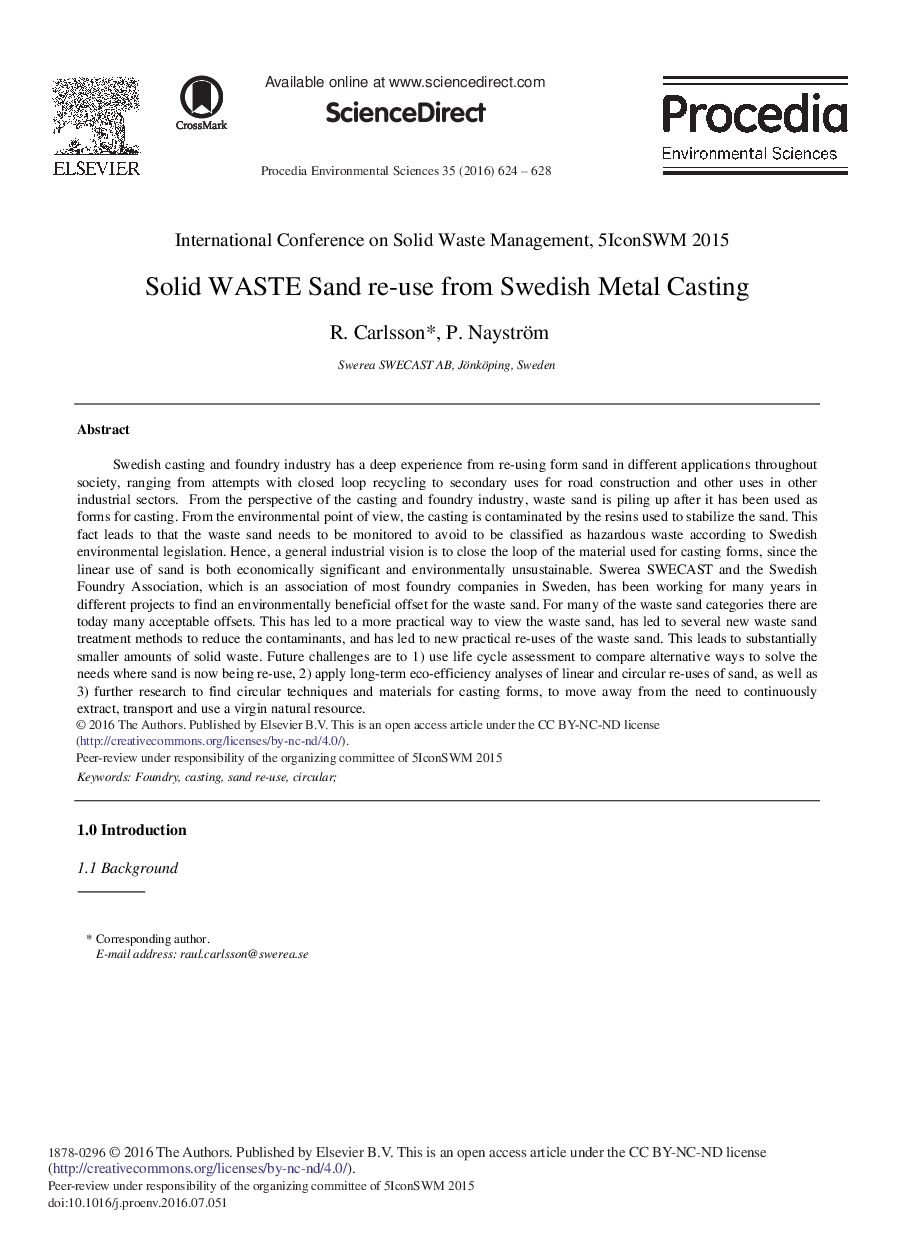| کد مقاله | کد نشریه | سال انتشار | مقاله انگلیسی | نسخه تمام متن |
|---|---|---|---|---|
| 4401416 | 1618609 | 2016 | 5 صفحه PDF | دانلود رایگان |
Swedish casting and foundry industry has a deep experience from re-using form sand in different applications throughout society, ranging from attempts with closed loop recycling to secondary uses for road construction and other uses in other industrial sectors. From the perspective of the casting and foundry industry, waste sand is piling up after it has been used as forms for casting. From the environmental point of view, the casting is contaminated by the resins used to stabilize the sand. This fact leads to that the waste sand needs to be monitored to avoid to be classified as hazardous waste according to Swedish environmental legislation. Hence, a general industrial vision is to close the loop of the material used for casting forms, since the linear use of sand is both economically significant and environmentally unsustainable. Swerea SWECAST and the Swedish Foundry Association, which is an association of most foundry companies in Sweden, has been working for many years in different projects to find an environmentally beneficial offset for the waste sand. For many of the waste sand categories there are today many acceptable offsets. This has led to a more practical way to view the waste sand, has led to several new waste sand treatment methods to reduce the contaminants, and has led to new practical re-uses of the waste sand. This leads to substantially smaller amounts of solid waste. Future challenges are to 1) use life cycle assessment to compare alternative ways to solve the needs where sand is now being re-use, 2) apply long-term eco-efficiency analyses of linear and circular re-uses of sand, as well as 3) further research to find circular techniques and materials for casting forms, to move away from the need to continuously extract, transport and use a virgin natural resource.
Journal: Procedia Environmental Sciences - Volume 35, 2016, Pages 624–628
